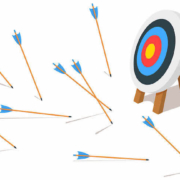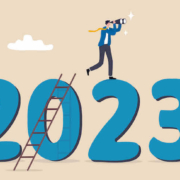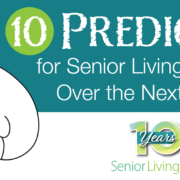6 Mistakes You’re Making with Your Senior Living Leads
An evergreen topic is one that’s always relevant (no matter how much we might wish it wasn’t). That’s why we’re revisiting this evergreen topic: mistakes you’re probably making with your senior living leads—and what you can do about it.
No, you might not be making all of these errors. But even one or two can have a dramatic effect on your numbers. Resolve to do better this year! Here’s what to look for with your senior living leads—and how to make fixes that stick.
Mistake #1. You’re treating all leads the same.
Remember, every lead will be at a slightly different point in their journey. Some are in research mode—maybe for themselves, maybe for a loved one. Others are gathering options as they think more seriously about making a move to senior living in “a couple of years.” Others are looking to make a move within a few months. Still, others might be in panic mode—their mom has fallen or their dad has died and now mom’s alone—and they’re looking to decide soon.
Why on earth would you give everyone we described above the same emails, the same content, or the same cadence of sales calls? You wouldn’t—or you shouldn’t. One size does not fit all when it comes to leads.
- WHAT TO DO: Develop a lead-scoring strategy and score leads accordingly. Then, create a plan for communicating further with each “set” of leads that need nurturing. Only serve up true sales-ready leads to the sales team.
Mistake #2. You still think that you’re in control of the sales process.
Before the Internet, people relied on salespeople to educate them about the things they wanted to buy. Today, people have all the information they need—at their fingertips—to educate themselves when making a purchase, whether that’s a pair of sneakers, a used car, or a place to start the next chapter of their lives post-retirement.
Prospects can check out a brand’s website, read online reviews, ask friends and family for quick recommendations via text and email, and seek opinions on social media before ever entertaining the thought of speaking to a salesperson.
- WHAT TO DO: We’re not suggesting that salespeople are irrelevant. What we are saying is that to be successful in senior living sales today, you need to embrace this shift. If someone hasn’t asked to speak to you yet, you shouldn’t be hounding them with calls. They will let you know when they want to connect. In the meantime, focus on folks who have requested your help or insight. Note: you’ll likely be working fewer leads at any given time, but they will be better leads since they’ll have high intent.
Mistake #3. You’ve underestimated the length of the sales cycle.
The sales cycle has increased in length dramatically in recent years. Remember, the prospect doesn’t care about your sales quotas or projections. If a younger Boomer is planning her retirement two years out, you need to adapt to her schedule—and you need to keep her engaged at every step along the way.
- WHAT TO DO: This is why great content and marketing automation are critical. To keep people engaged at every touchpoint of the longer sales cycle, you need to provide the right content at the right time—and get it to them easily (again, removing all points of friction). Generic content won’t cut it. Producing content that’s similar to your competitors won’t work, either. You need original content that resonates. And yes, that is an investment.
Mistake #4. You’re not maximizing marketing automation to its fullest.
Speaking of marketing automation . . . we find that most communities haven’t begun to scratch the service in terms of maximizing available features.
- WHAT TO DO: Audit your marketing automation and make sure you’re using all features. Or, downgrade your license so that you’re only paying for what you use. Hint: We’ve helped other communities save money because we know what to look for in the licensing agreements, especially with complex marketing automation products like HubSpot. Get in touch if you want us to take a peek under the hood.
Mistake #5. You have people interacting with leads who shouldn’t be.
Your front desk person is wonderful for routing calls to residents, greeting visitors, and helping residents make calls or check on deliveries. But don’t expect your front desk person to be a surrogate salesperson. That’s not their specialty.
- WHAT TO DO: Some communities get lots of phone “traffic” from potential residents. If that’s the case with your community—and if you’re finding that these leads fall through the cracks or don’t covert—it might be time to think of a better way to manage these leads. A good solution? A call center with expertise in senior living.
Mistake #6. You have leads who get added to the “cold” list way too quickly.
Too often, we see a community’s CRM filled with “lost” or “cold” leads—and yet, these leads only received a couple of “touches” before they were moved to the cold/lost list. As we mentioned earlier, the sales cycle in senior living is long. You need to nurture early-stage leads. And you need to be persistent with sales-qualified leads that have expressed direct interest in your community.
Not only that, but let’s talk about third-party leads for a moment. Since these are shared leads, they require a different strategy. The community that responds to the lead the fastest tends to have better conversions.
Once again, treating all leads the same way is not a winning strategy.
- WHAT TO DO: Audit your CRM’s lost/cold lists. As we like to say, there can be gold in those cold leads. Luckily, we have a turnkey re-engagement campaign that can help you sift for the gold. You should also revisit how you manage third-party leads. Need help? Consider trying our “speed to the lead” solution. This is an automated five-step lead nurturing workflow that nudges people along the sales funnel and encourages them to request a tour.
Do you know something’s off with your leads, but you’re not sure what to do next? Call us.
The ultimate fix for any breakdown in your lead management process is simple. Call us! We combine our senior living expertise with our marketing expertise to create a lead management process that gets results. Get in touch and let’s talk.











